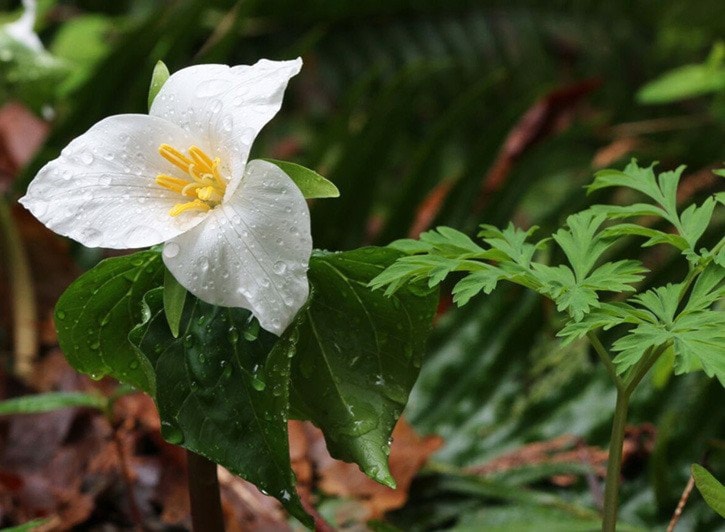Before daffodils and tulips arrived to this area, trilliums, specifically "Trillium ovatum," were spring’s envoy.
They were until recently a protected plant in B.C. and shouldn’t be picked. It takes up to seven years for a damaged plant to blossom again. You can eat the leaves but it will take the plant up to seven years to recover from your harvest, if it survives at all.
They appear white at first but when they turn red or purple it indicates to their pollinators, typically beetles, wasps and moths, that they have already been pollinated. They are different from many other plants in depending on insects such as ants to disperse their seeds. This method of seed dispersal is called myrmecochory.
Trilliums are considered to be medicinal plants because they contain sapogenin, a uterine stimulant and the reason these flowers were once called birthwort or birthroot.
The dogwood, rhododendron and trillium were protected under a 1931 provincial act, but that ended when the provincial government repealed the law in April 2002. Kevin Falcon, the minister of state for deregulation at the time, said there was no shortage of rhodos or trilliums in B.C. and saw no need to continue the protection for the three plants.
Michigan and New York still protect trilliums.
